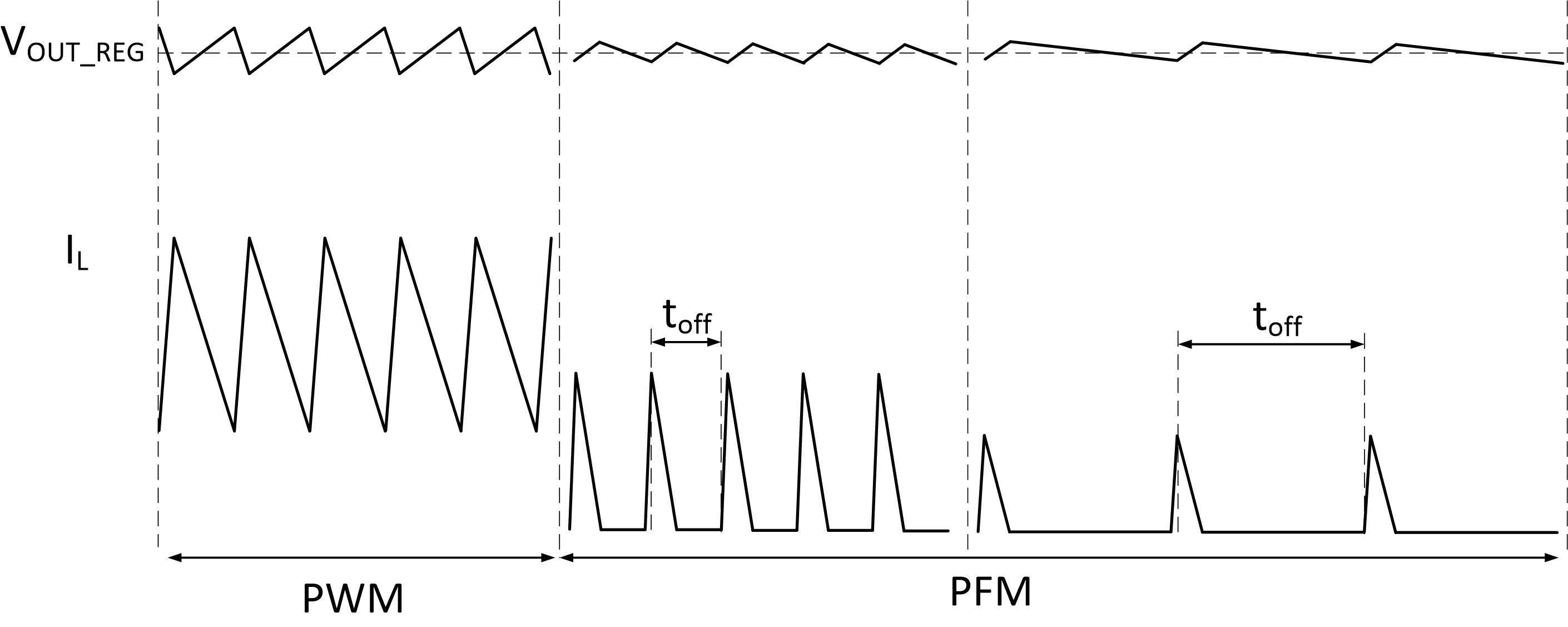ZHCSLR2C August 2020 – March 2022 TPS61288
PRODUCTION DATA
8.4.2 PFM
TPS61288 以平滑的导通时间/关断时间 (SOO) 模式提供从 PWM 到 PFM 运行的无缝转换,并启用自动脉冲跳跃模式,该模式可在宽负载范围内提供出色的效率。随着负载电流下降或 VIN 上升,内部误差放大器的输出会降低,使电感器峰值电流降低,从而为负载提供更低的功率。如果输出电流进一步降低,在关断期间电感器的电流会降为零。转换器会检测电感器电流,并通过关闭高侧 MOSFET 直到下一个开关周期开始来防止负流。
当电感器峰值电流达到 2.6A(典型值)时,随着峰值电流的降低,TPS61288 延长开关周期的关断时间,以减少为输出提供的能量,并将输出电压调节到目标值。误差放大器的输出持续下降,并达到相对于1.3A(典型值)峰值电流的阈值,误差放大器的输出被钳位在该值,并且不再下降。
在 SOO 模式下,TPS61288 会使输出电压等于设置电压。此外,由于峰值电流较低,因此在轻负载时的输出电压纹波要小得多。请参阅 图 8-1。 图 8-1 PFM 模式图
图 8-1 PFM 模式图